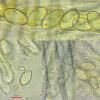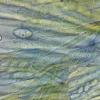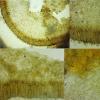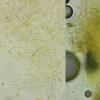
28-05-2015 19:45
John LeachHi all I recently found this Ascomycete in Anston

05-06-2015 21:36
Peter ThompsonHello Everyone,I have found some grey perithecia i

06-06-2015 15:00
 Bernard CLESSE
Bernard CLESSE
Bonjour à tous,Voici ce que je pense être un Das

06-06-2015 20:04
 Chris Yeates
Chris Yeates
Bonsoir tousFollowing my coming across "Psilachnum

06-06-2015 20:25
Quijada LuisHi all,I would like to know if somebody in the for

31-05-2015 20:17
 Bernard CLESSE
Bernard CLESSE
Bonsoir à tous,Je pense reconnaître ici Mollisia

05-06-2015 20:49
Peter ThompsonHello Everyone,I am puzzled by black ascomycetes w

05-06-2015 19:24
 Bernard CLESSE
Bernard CLESSE
Bonsoir à tous,Pouvez-vous me donner une piste po
Purpureodiscus - kreiselii?
Lothar Krieglsteiner,
17-12-2024 18:50
 from Portugal, on naked soil under Quercus suber above slate-stone.
from Portugal, on naked soil under Quercus suber above slate-stone. When collecting, I strongly thought of Purpureodiscus subisabellinus but hesitated mainly because of the different ecology (I know P.s. in connection with Fraxinus-wood from different findplaces).
Under the microscope it became clear very soon that the collection is not P. subisabellinus. The recherche now led to the paper of Hirsch and his description of P. kreiselii with quite similar characters. Unfortunately, I have no access to the descriptions of P. bananincola (likely not my fungus) and P. luteorosellus - as the latter is a LeGal-species likely from Southern Europe it also could perhaps be a possibility.
I noted clavate paraphyses that are often clustered, eguttulate spores of about 17-21/9,5-11,5 µm, asci with a diffuse iodine reaction at nearly entire length and pleurorhynchous ascus-bases. I also had thought of Pachyella because of the thick ascomata, but I found no gel and no oildrops in the spores (besides the drier ecology).
Who can tell me if P. kreiselii is correct or if P. luteorosellus is perhaps a better choice.
Yours, Lothar
Nicolas VAN VOOREN,
17-12-2024 18:57

Re : Purpureodiscus - kreiselii?
Interesting, this collection deserves a sequencing to evaluate if P. kreiselii is a good species or simply a form of P. subisabellinus. The other known Purpureodiscus are excluded because they are pantropical species.
Lothar Krieglsteiner,
17-12-2024 19:07

Re : Purpureodiscus - kreiselii?
thank you for your opinion. If you want me to send the specimen please tell me.
Yours, Lothar
Yours, Lothar








